Input interpretation

m-xylene
Chemical names and formulas
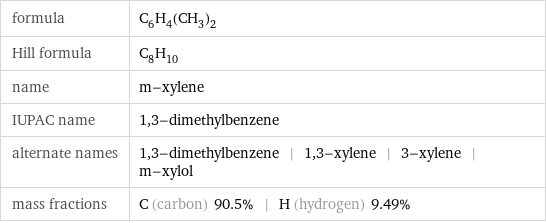
formula | C_6H_4(CH_3)_2 Hill formula | C_8H_10 name | m-xylene IUPAC name | 1, 3-dimethylbenzene alternate names | 1, 3-dimethylbenzene | 1, 3-xylene | 3-xylene | m-xylol mass fractions | C (carbon) 90.5% | H (hydrogen) 9.49%
Lewis structure
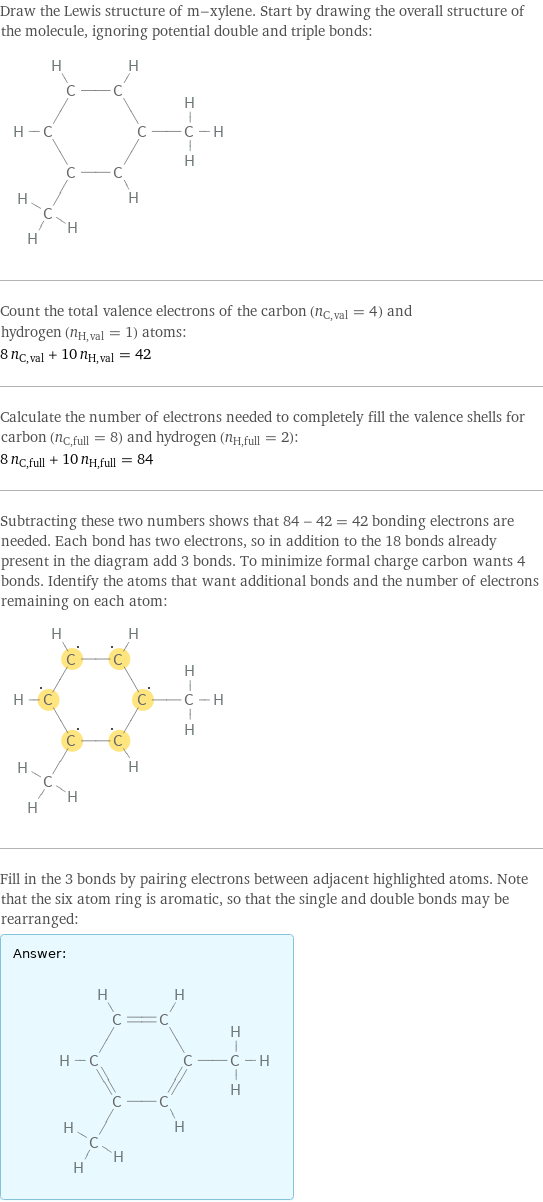
Draw the Lewis structure of m-xylene. Start by drawing the overall structure of the molecule, ignoring potential double and triple bonds: Count the total valence electrons of the carbon (n_C, val = 4) and hydrogen (n_H, val = 1) atoms: 8 n_C, val + 10 n_H, val = 42 Calculate the number of electrons needed to completely fill the valence shells for carbon (n_C, full = 8) and hydrogen (n_H, full = 2): 8 n_C, full + 10 n_H, full = 84 Subtracting these two numbers shows that 84 - 42 = 42 bonding electrons are needed. Each bond has two electrons, so in addition to the 18 bonds already present in the diagram add 3 bonds. To minimize formal charge carbon wants 4 bonds. Identify the atoms that want additional bonds and the number of electrons remaining on each atom: Fill in the 3 bonds by pairing electrons between adjacent highlighted atoms. Note that the six atom ring is aromatic, so that the single and double bonds may be rearranged: Answer: | |
3D structure
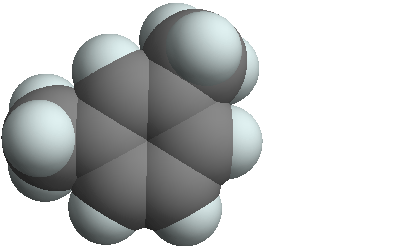
3D structure
Basic properties

molar mass | 106.17 g/mol phase | liquid (at STP) melting point | -48 °C boiling point | 138.5 °C density | 0.868 g/cm^3 solubility in water | insoluble dielectric constant | 2.374
Liquid properties (at STP)

density | 0.868 g/cm^3 vapor pressure | 16 mmHg dynamic viscosity | 5.81×10^-4 Pa s (at 25 °C) surface tension | 0.0289 N/m refractive index | 1.497 UV cutoff wavelength | 290 nm
Units

Thermodynamic properties
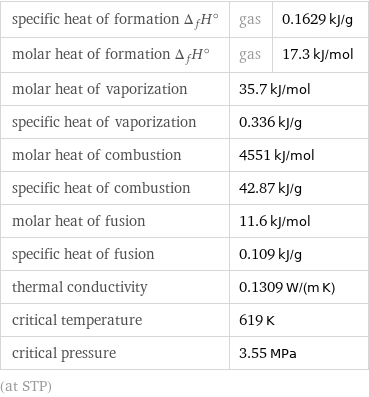
specific heat of formation Δ_fH° | gas | 0.1629 kJ/g molar heat of formation Δ_fH° | gas | 17.3 kJ/mol molar heat of vaporization | 35.7 kJ/mol | specific heat of vaporization | 0.336 kJ/g | molar heat of combustion | 4551 kJ/mol | specific heat of combustion | 42.87 kJ/g | molar heat of fusion | 11.6 kJ/mol | specific heat of fusion | 0.109 kJ/g | thermal conductivity | 0.1309 W/(m K) | critical temperature | 619 K | critical pressure | 3.55 MPa | (at STP)
Chemical identifiers
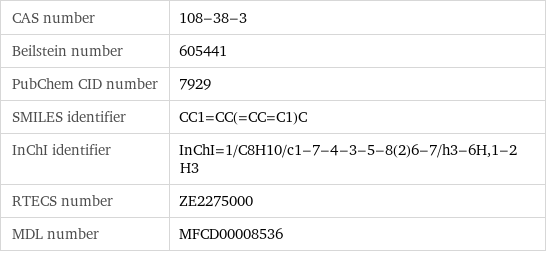
CAS number | 108-38-3 Beilstein number | 605441 PubChem CID number | 7929 SMILES identifier | CC1=CC(=CC=C1)C InChI identifier | InChI=1/C8H10/c1-7-4-3-5-8(2)6-7/h3-6H, 1-2H3 RTECS number | ZE2275000 MDL number | MFCD00008536
NFPA label

NFPA label
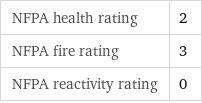
NFPA health rating | 2 NFPA fire rating | 3 NFPA reactivity rating | 0
Safety properties
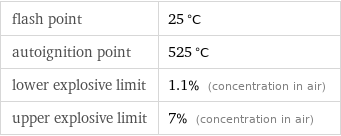
flash point | 25 °C autoignition point | 525 °C lower explosive limit | 1.1% (concentration in air) upper explosive limit | 7% (concentration in air)

DOT hazard class | 3 DOT numbers | 1307
Toxicity properties

odor | aromatic odor threshold | 1.1 ppm threshold limit value | 100 ppmv

RTECS classes | tumorigen | reproductive effector | human data | primary irritant